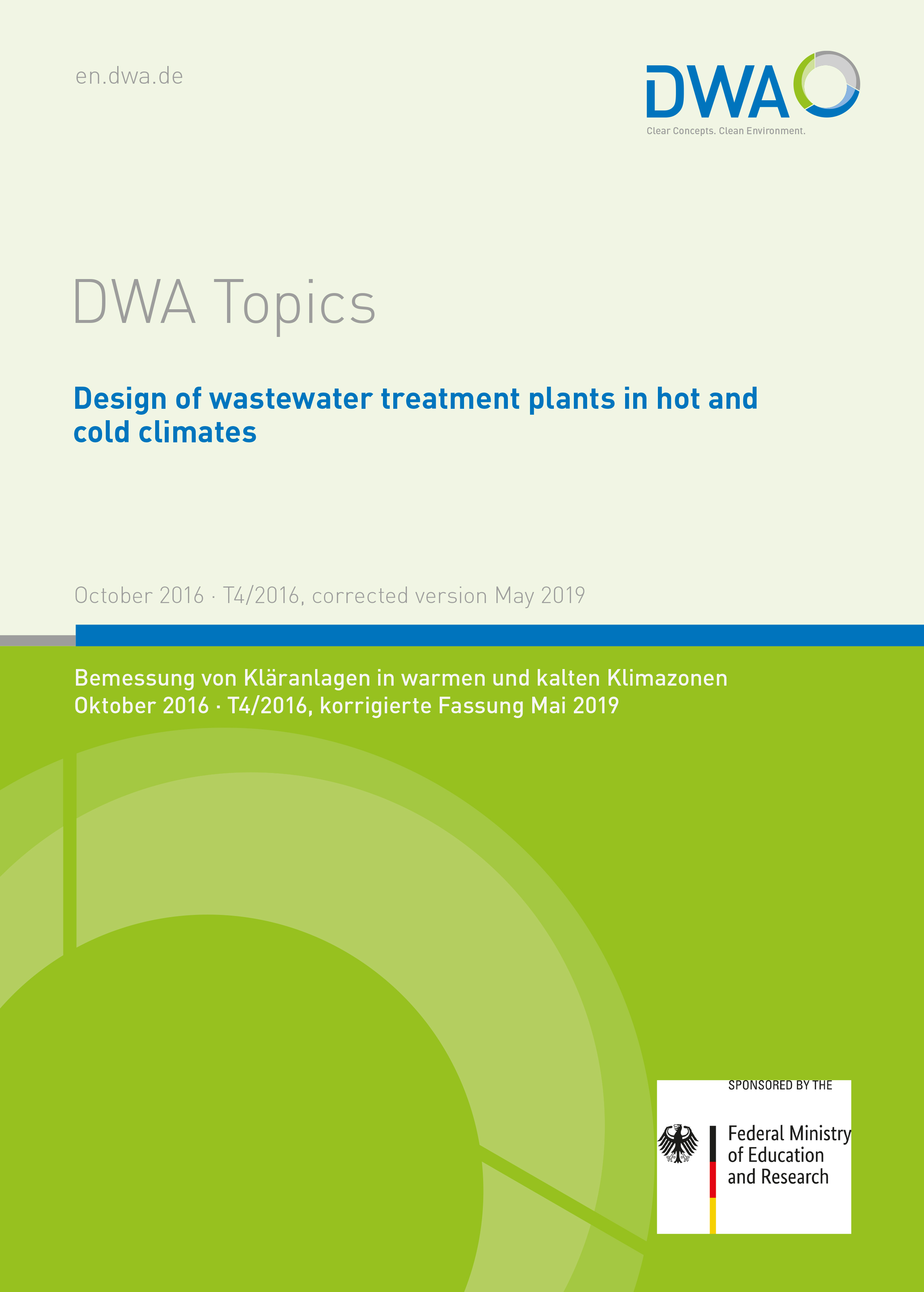Design of wastewater treatment plants in hot and cold climates
The results have been prepared for this volume in the form of internationally applicable design approaches and supplement the DWA Set of Rules accordingly. The new and extended design approaches include activated sludge plants, trickling filter systems and wastewater ponds, UASB-reactors, plants for anaerobic sludge stabilisation and solar sewage sludge drying, aeration systems and the elimination of helminth eggs.
Practical calculation examples are presented for all processes. In addition to the extension and adaptation especially to different temperature conditions, the design approaches in this volume were uniformly converted to the internationally widespread monitoring practice by means of daily average values and to the chemical oxygen demand (COD) for the cleaning objective of carbon degradation.

